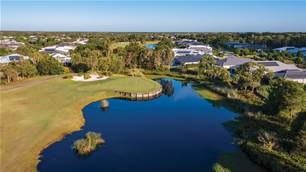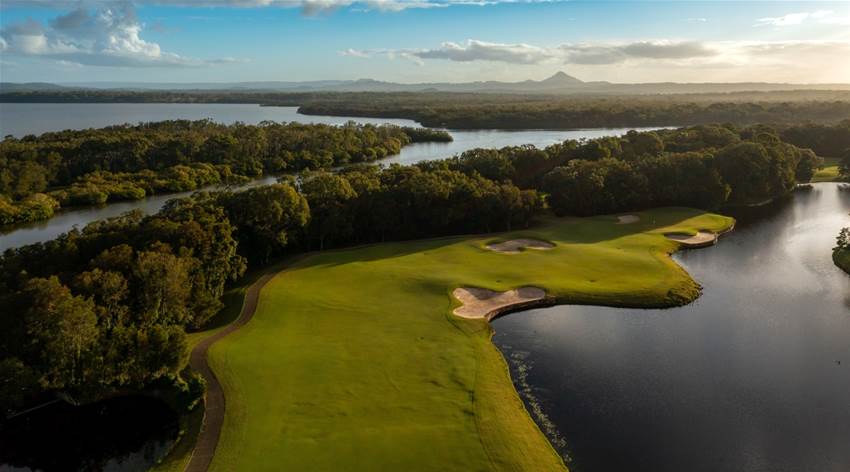Graham Papworth is one of Australia's more underrated golf course architects. And given the quality of his design at Noosa Springs on Queensland's Sunshine Coast, it is hard to understand why.
Papworth learned his trade working for designer Ross Watson and, later, the Watson and Graham Marsh partnership. He spent nine years honing his skills on projects, which included The Vines and Secret Harbour in Western Australia as well as NSW's Terrey Hills and Horizons layouts.
A common thread linking these four courses is each design incorporates a residential development within, or around, the boundaries but offsets this with a naturally occurring landscape for golf. In fact, Papworth's design philosophy is to place holes to suit and retain existing natural features.
"When the playing strategy of the hole suits the natural landfall, we create holes that are aesthetically pleasing and offer maximum enjoyment and reward to the player who takes on and achieves his level of challenge," Papworth told Golf Australia magazine in a 2010 interview. Papworth certainly fulfilled that brief at Noosa Springs.
The layout, which opened in 1999, might lay at the heart of a massive luxury residential development – just three kilometres from the centre of cosmopolitan Noosa Heads – but Papworth sticks to his word.
National parklands and the picturesque Lake Weyba, on the southern edge of the course, border Noosa Springs. It covers gently undulating terrain and winds through pockets of rainforest as well as small bloodwood forests before breaking out onto wide fairways flanked by imposing stands of melaleuca.
Several fresh and saltwater lakes provide water hazards on a dozen holes but they are not there to keep ball collectors gainfully employed. That wasn't Papworth's aim. Nor was it his aim to intimidate players by pumping his design with steroids and presenting a 6,500-metre plus layout. In this day and age of course designers combating advancements in club and ball technology by stretching their courses to greater distances, Papworth has created a testing 6,198-metre (from the championship tees) layout through clever design.

He has set out to deceive wherever possible by subtly changing the lie of the land on green approaches to make a player second-guess club selection.
It is the perfect golf course for its location. Four tees have been incorporated on each hole, so the choice of difficulty is left up to the player. This is ideal considering the hordes of holidaymakers that venture to the region and their Noosa Springs experience might be a-once-a-year hit out. How disconcerting would it be to blow the vacation budget on golf balls. That said, there are plenty of challenges on offer for more accomplished players. Few people come away from Noosa Springs not remembering the stretch of holes from the par-3 4th to the par-4 7th. Water plays its part on all four holes but there is definitely a ‘safe’ and a ‘risky’ option on each of the quartet.
From the championship black tees, the 4th measures 141 metres and features a wide green that could easily be split into two distinct halves. The putting surface lies diagonally to your approach, with water coming into play for any shot misdirected short or left of the target. Locals look to the treetops here for a gauge on the wind direction and will select a club accordingly. A bail out area short and right of the green takes the water, and a bunker through the back of the green, out of play.

The 329-metre par-4 5th might be short but it has inflicted more than its fair share of pain over the past two decades. The snaking fairway is flanked by water to the right, while a tongue of short grass just beyond a lakeside fairway trap entices the longer hitter into taking a short cut to the green. On this aggressive line, it is a 215-metre carry from the back pegs to safely clear the water and find the fairway. Any slight mis-hit is headed for a watery grave. The approach is tough too, with a 40-metre deep green perched just a few feet above the water line.
Water plays a cosmetic role on the par-4 6th. Only the wildest of hitters could fear the hazard well right of the fairway on this 356-metre hole. The real test comes on hitting the green, which is just 20 metres wide and features slopes on both sides that will kick mis-hits into the rough. Another deep, narrow green awaits at the 415-metre par-4 7th but it is the lake just right of the fairway, for all of its distance between tee and green, that hurts the scorecard here.
On the back nine, Papworth's penchant for deception is evident and it starts on what I believe is the best hole at Noosa Springs – the 406-metre par-4 12th. From an elevated tee, the trouble is laid out before you. Water cuts in toward the left edge of the fairway while a shallow, but long, fairway bunker hugs the right rough and is within easy reach from the tee. Papworth's deception of distance is, perhaps, no more apparent than on this hole. Standing in the middle of the fairway about 150 metres from the green, the approach shot looks much shorter. A bunker cutting in front of the green, but well short of the putting surface, serves to deceive you on club selection by creating a no-man’s land between its front lip and the green.

The short uphill par-4 14th is another deceptive offering. At 329 metres from the back markers, it is not a long hole and position on the fairway between the dense clumps or trees and rough left and right is paramount. The approach to the elevated green is deceiving with a large tongue of fairway extending back down the hill, making the green appear closer than it really is. It is a semi-blind approach shot where you can see the top of the flag and little else to help with club selection. It is best to take one more club than you think here, just to be on the safe side.
By the time you reach the 18th tee, you will not only be happy with the challenging yet fair design, but the condition of the playing surfaces will have impressed.
The Greenlees Park couch fairways are beautifully presented year-round (the idyllic Noosa weather probably has something to do with that) while the Bermuda Tifdwarf greens are receptive and true rolling. I've had the fortune of playing Noosa Springs many times during its 23 years and the putting surfaces have always been very good. Even in winter when the cooler overnight temperatures cause the greens to brown slightly, Noosa Springs’ greens remain a joy to putt on.

It is this consistency and high level of presentation that has seen Noosa Springs cement a place in Golf Australia’s Top-100 Public Access Courses for more than a decade.
“This idyllic resort course offers beautiful surrounds, while Graham Papworth’s design walks that fine line of challenging better players and not alienating high handicappers or casual golfers by being too brutal,” commented Top-100 judge, Gavin Hill.
Fellow judge, Matthew Greig, added: “I’ve never encountered a round at Noosa Springs where the condition can be questioned.” I couldn’t agree more.
FACT FILE
LOCATION: Links Drive, Noosa Heads, Queensland.
 CONTACT: (07) 5440 3325.
CONTACT: (07) 5440 3325.
WEBSITE: www.noosasprings.com.au
DESIGNER: Graham Papworth (1999).
COURSE SUPERINTENDENT: Peter Woods.
PGA PROFESSIONALS: Peter Heiniger, Greg Lynch.
GREEN FEES: $135 (18 holes, inc. cart); $120 (online booking rate, 18 holes inc. cart); $75 (nine holes, inc.cart).
PLAY & STAY PACKAGES: Noosa Springs offers a range of play and stay packages including an unlimited golf getaway for $275 per person twin share per night. This package is a minimum two nights’ accommodation in a spacious self-contained apartment with daily breakfast, plus unlimited golf per person per day in a cart. For more details, visit the resort’s website.
Related Articles

Travel Feature: Golf’s Sunny Side

Review: Omaha Beach Golf Club













